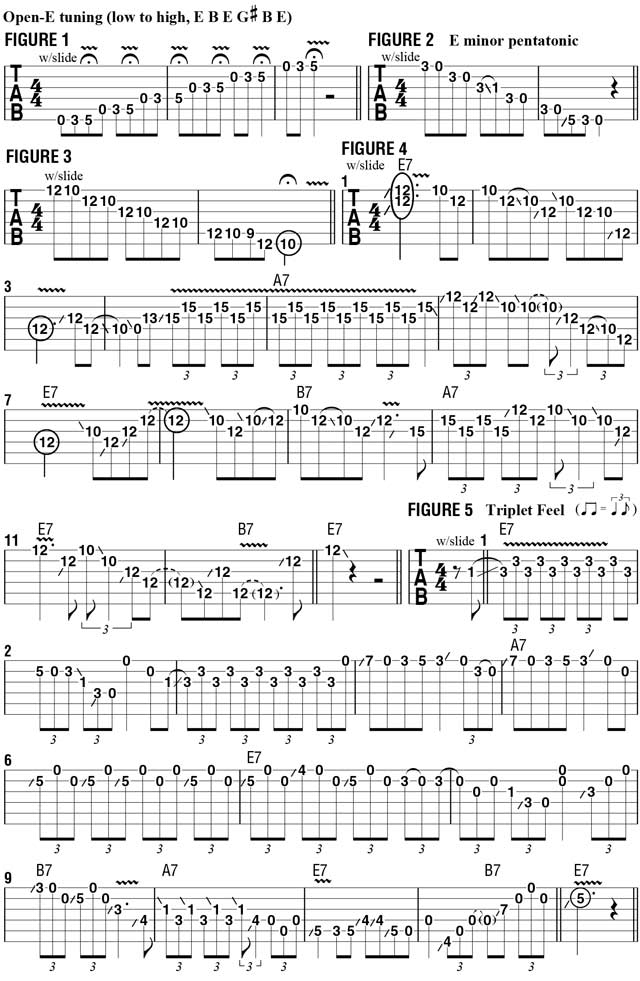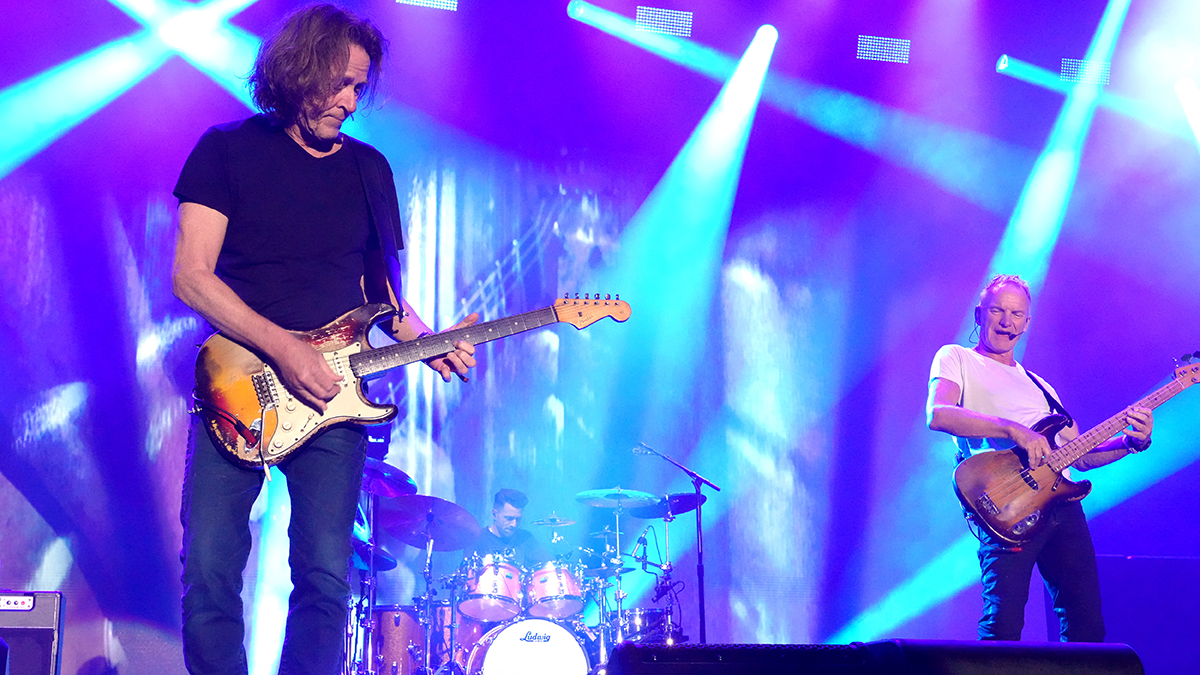Exploring Slide Guitar in Open E Tuning
Learn how to master one of the most distinctive sounds in blues and rock music.

One of the most distinctive sounds in blues and rock music is that of a slide guitar.
“Slide playing” refers to the action of gently pressing a smooth object against the strings and gliding it up and down their length in order to produce varying pitches, without pressing the strings down against the fretboard.
Many of the old blues players from the early twentieth century would saw the neck off a bottle and use it as a slide (hence the term “bottleneck guitar”), while others would cut off a small length of metal pipe and use that as a slide. Metal produces a brighter tone while glass provides a smoother sound.
Today, you can easily find both glass and metal slides in any guitar store, and some manufacturers offer ceramic slides. Most players “wear” the slide on one of their fret-hand fingers. Delta blues legend Robert Johnson wore a metal slide on his pinkie, as did Johnny Winter, while Duane Allman wore a glass bottle-type slide on his ring finger, as do Warren Haynes and Derek Trucks. Bonnie Raitt, Ron Wood, Joe Perry and Dickey Betts prefer to wear the slide on their middle finger.
For the examples in this lesson, I’m using a bottle-type slide, worn on my ring finger.
The most common open tunings for slide guitar playing are open E, D, G and A. Allman and Trucks, widely considered to be two of the greatest slide players ever, have mostly preferred to play slide in open E tuning, which is spelled, low to high, E B E G# B E. With this tuning, the guitar’s open A, D and G strings are tuned up to B, E and G#, respectively.
Strumming across all six open strings sounds an E major chord, and barring across them at any given fret will yield a major chord with the root notes found on the sixth, fourth and first strings. For proper intonation when playing with a slide (playing in tune), it should be placed directly above the fret-wire, applying just enough pressure against the strings to allow the note to ring clearly.
All the latest guitar news, interviews, lessons, reviews, deals and more, direct to your inbox!
Usually, the open tuning used for slide is the same as the key of the song. When soloing in open E, the primary positions used are low on the neck, incorporating open strings, as well as moving between the 10th and 12th frets across all of the strings.
FIGURES 1 and 2 illustrate slide scale patterns that incorporate the open strings, while FIGURE 3 details the pattern that moves between the 10th and 12th frets. A good way to study slide soloing is to focus on each of these positions individually. In FIGURE 4, all of the phrases revolve around 12th position; in FIGURE 5, the focus is on the inclusion of open strings.
Play through each phrase slowly for a clear understanding of this technique.

Guitar World Associate Editor Andy Aledort is recognized worldwide for his vast contributions to guitar instruction, via his many best-selling instructional DVDs, transcription books and online lessons. Andy is a regular contributor to Guitar World and Truefire, and has toured with Dickey Betts of the Allman Brothers, as well as participating in several Jimi Hendrix Tribute Tours.

